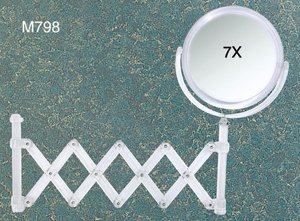The only way to cure damaged hair is to cut it off: Hair is dead, so trauma is not reversible. But there are ways to improve the way it looks and feels. If your hair resembles straw, apply a rich hydrating mask or deep conditioner and wrap your hair in a warm towel (straight from the dryer) for 20 minutes. The heat opens the cuticles and helps ingredients to penetrate into the hair shaft. A hot oil treatment can also add shine and luster to ravaged hair. Administer these treatments once a week, and for extreme damage, try two or three times weekly. To protect weakened tresses from further wear and tear, take these precautions.
Prevent hair damage
Condition: every single time you wash your hair to gradually add back moisture that's been sucked out over time by sunlight, your hair is extremely dry and brittle, apply leave-in conditioner in addition to regular conditioner.
Don't towel-dry your hair: it roughs up the cuticles, making hair harder to comb. Instead, gently squeeze out water, wrap your hair in a towel, turban-style, until it is mildly damp, then use a wide-tooth comb to detangle it before blow-drying. If you must blow-dry, protect your hair before blasting it with hot air. Products containing "thermal protection" or silicone create a barrier between the heat and your hair, making the hair shaft less vulnerable to damage. Always hold your blow-dryer at least two inches away from your hair. Better yet, abbreviate the blow-drying process. Let it air dry for 30 to 45 minutes - until it's almost dry. Then dry your hair on low heat, fluffing it with your hands, until it's 80% dry, then style.
Use the warm setting on styling tools like curling irons and flat irons: Choosing warm over hot will decrease the chances of damage. Also, never let an iron sit still on your hair.
Sleep on satin pillowcases: especially if you have dry, curly hair, regular cotton fabrics create friction, which ruffles the cuticle and make hair frizzy.
Dandruff control
Flakiness is never attractive, but in hair it's very treatable. Dandruff is caused by excess sebum, or oil, on the scalp. Your scalp is constantly shedding dead skin cells, which normally get washed away. The scalp also hosts a fungus called pityrosporum ovale, which lives in the skin. Normally, the levels of this fungus are too low to do anything. But when the scalp produces excess sebum, these yeast0like organisms proliferate, inflaming hair follicles and accelerating the shedding of dead skin cells, which fall of in large, oily flakes.
The best remedy is to rotate three over-the-counter dandruff shampoos-one containing salicylic acid, one containing selenium sulfide and a third containing pyrithione zinc - interesting them with a regular shampoo every other day. A trio of treatments is most effective because if you use only one active ingredient, the fungus can adapt and become immune to it. Make sure to use a matching conditioner with the same active ingredient as the shampoo.
When shampooing, massage your scalp vigorously to loosen flakes so they can be rinsed away, and leave the lather in your hair for three to five minutes. Rinse thoroughly, since residual shampoo can lead to more flaking. If that regimen doesn't fix the problem, see a dermatologist.
Wholesale Plantronics Cs55 Promotions Fujitsu Fi5120c Pet Safe Dog Fence Compare










